
Posted on 05/27/2010 5:17:05 AM PDT by Homer_J_Simpson

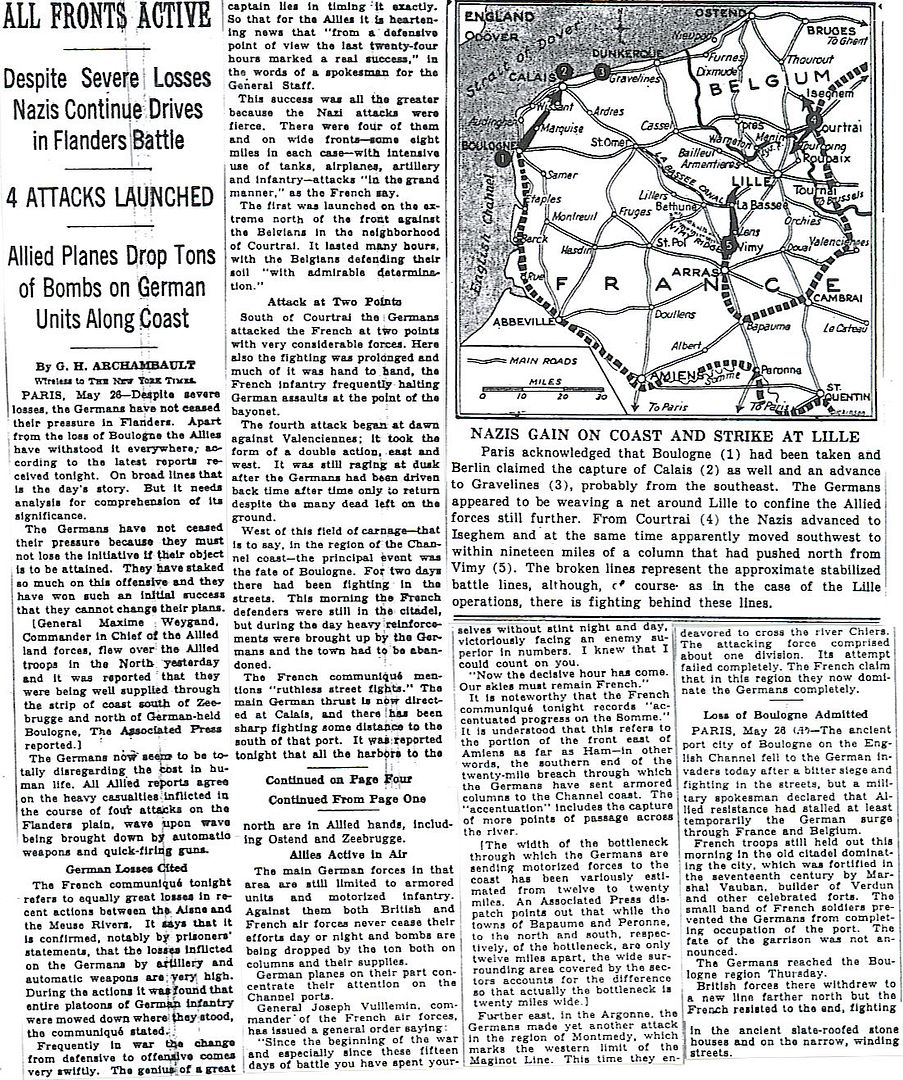


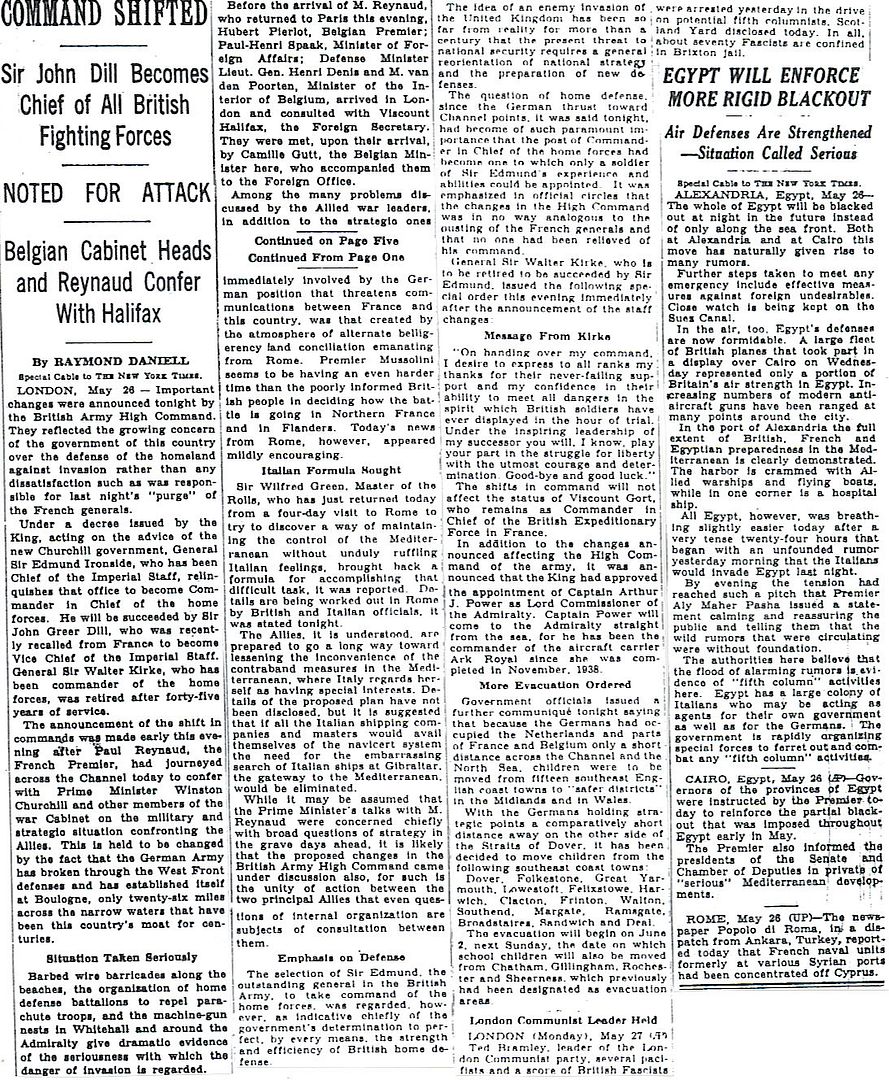
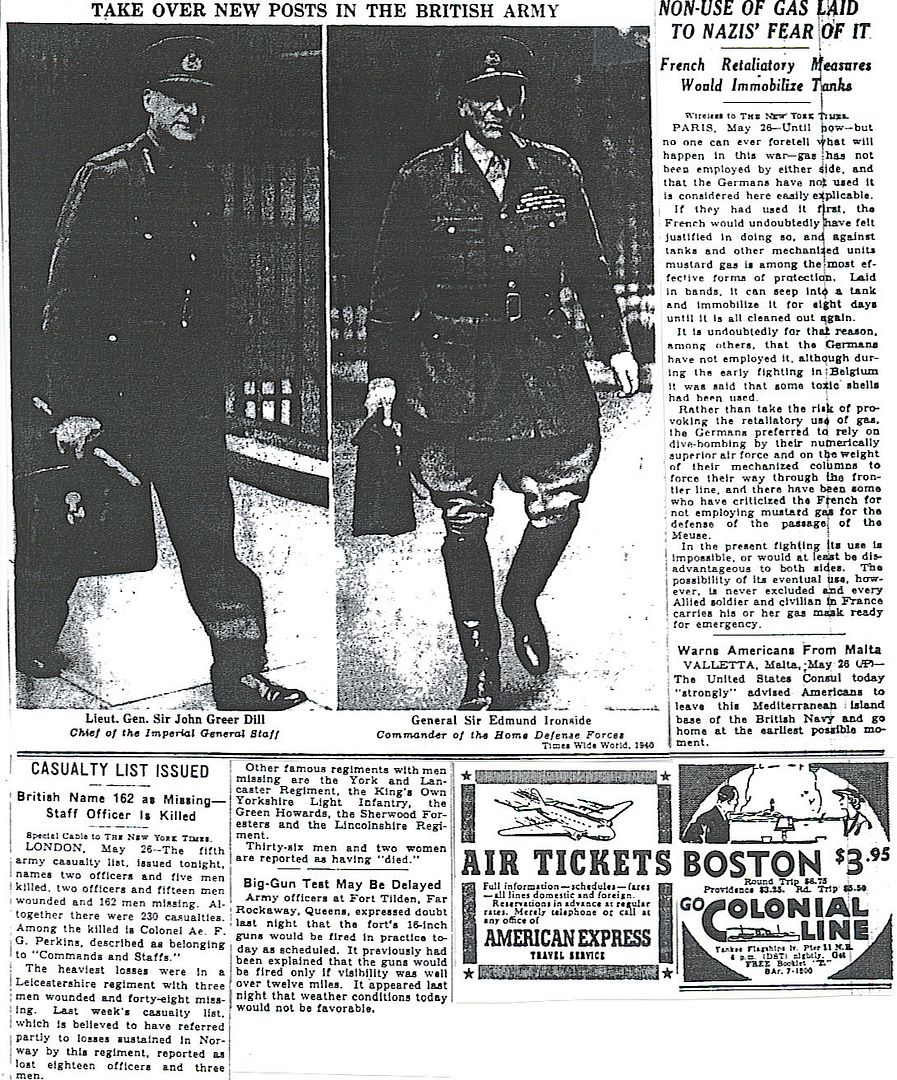

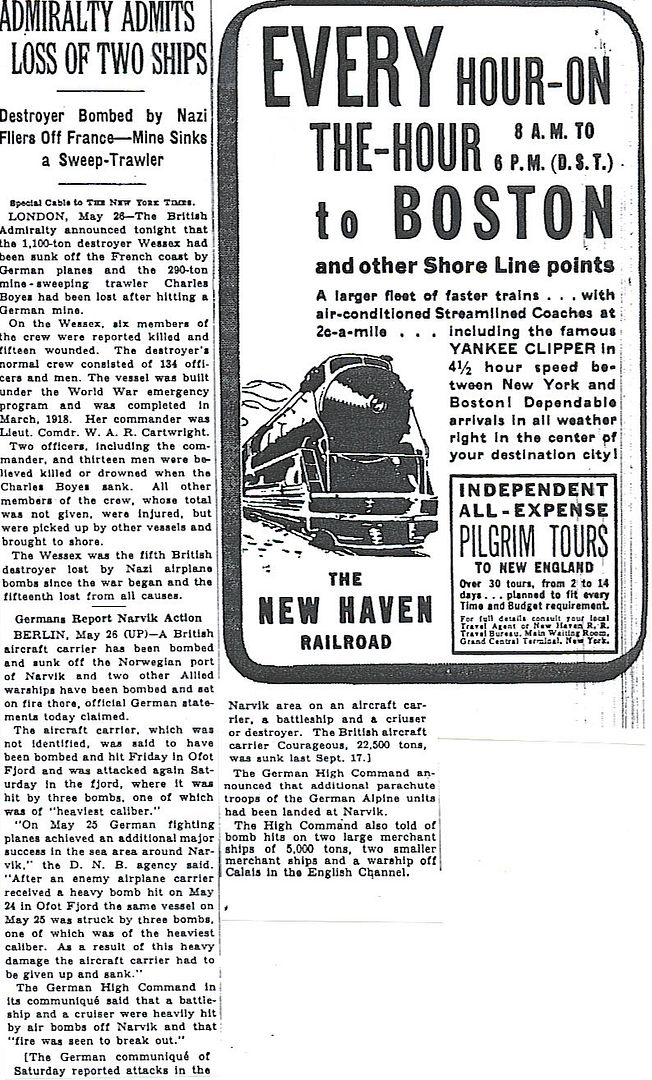
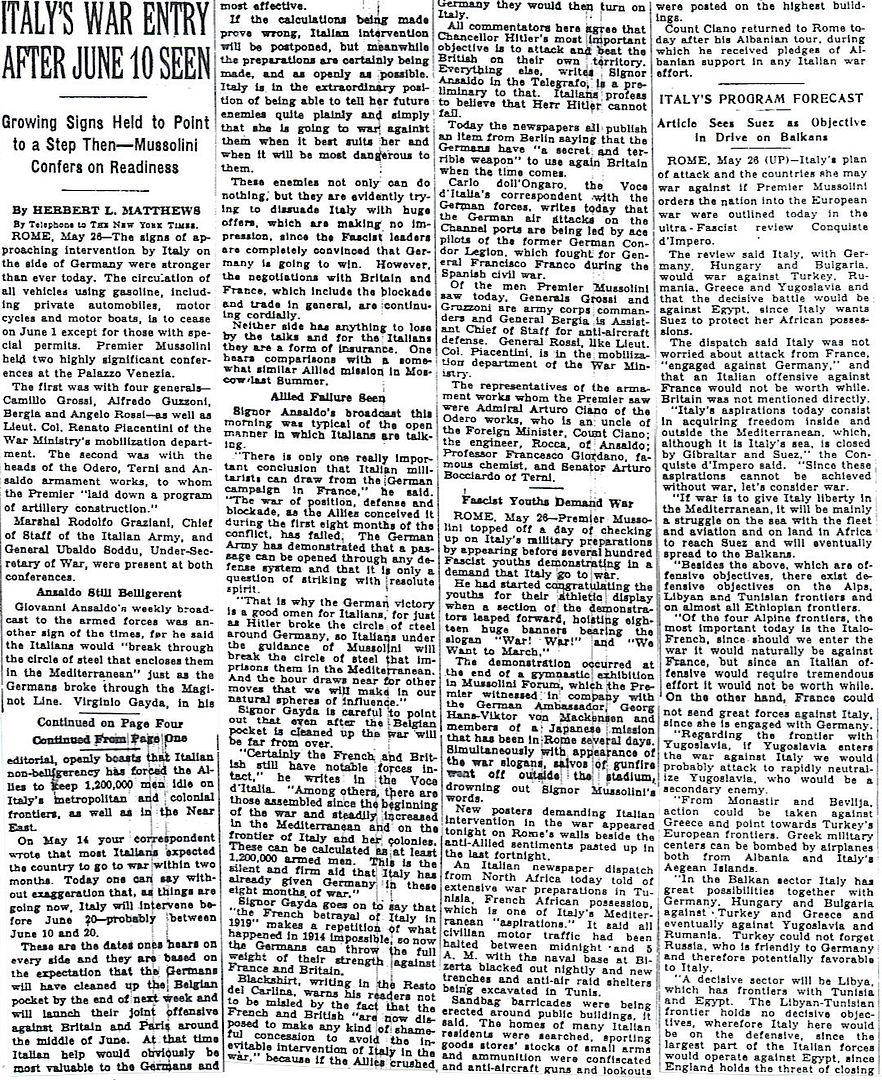
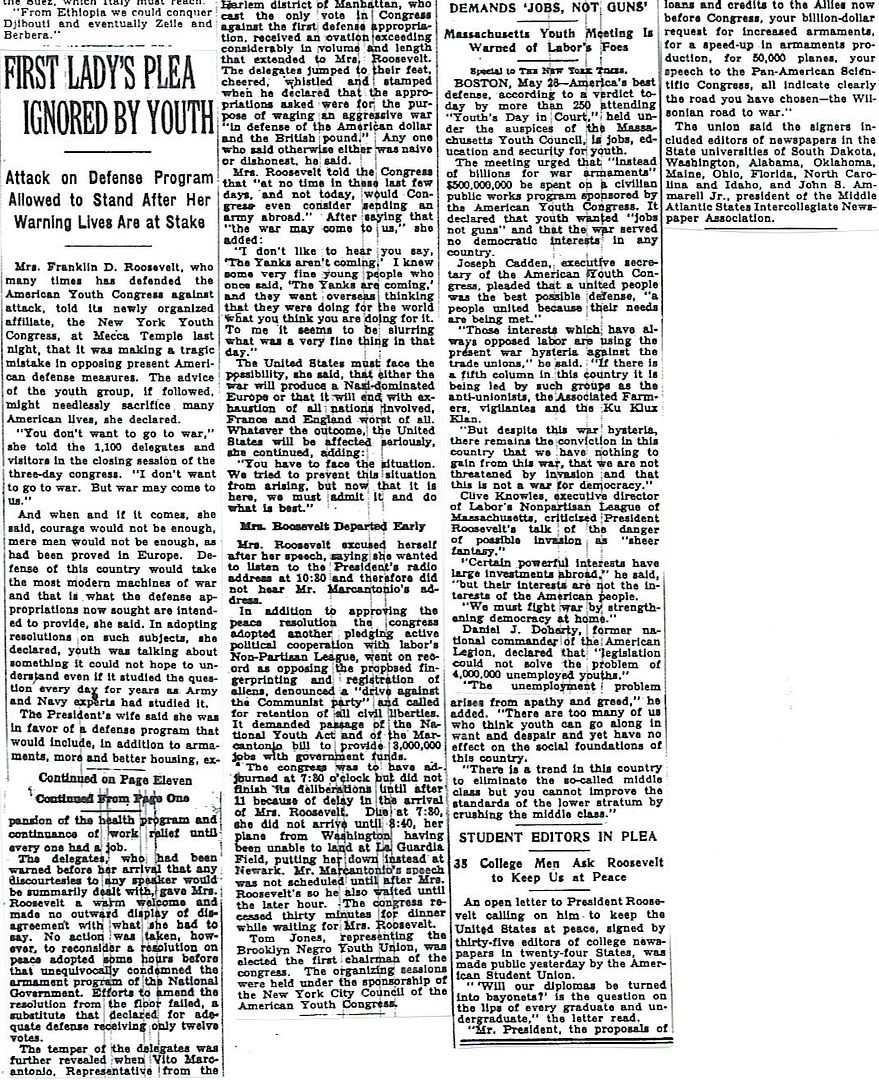
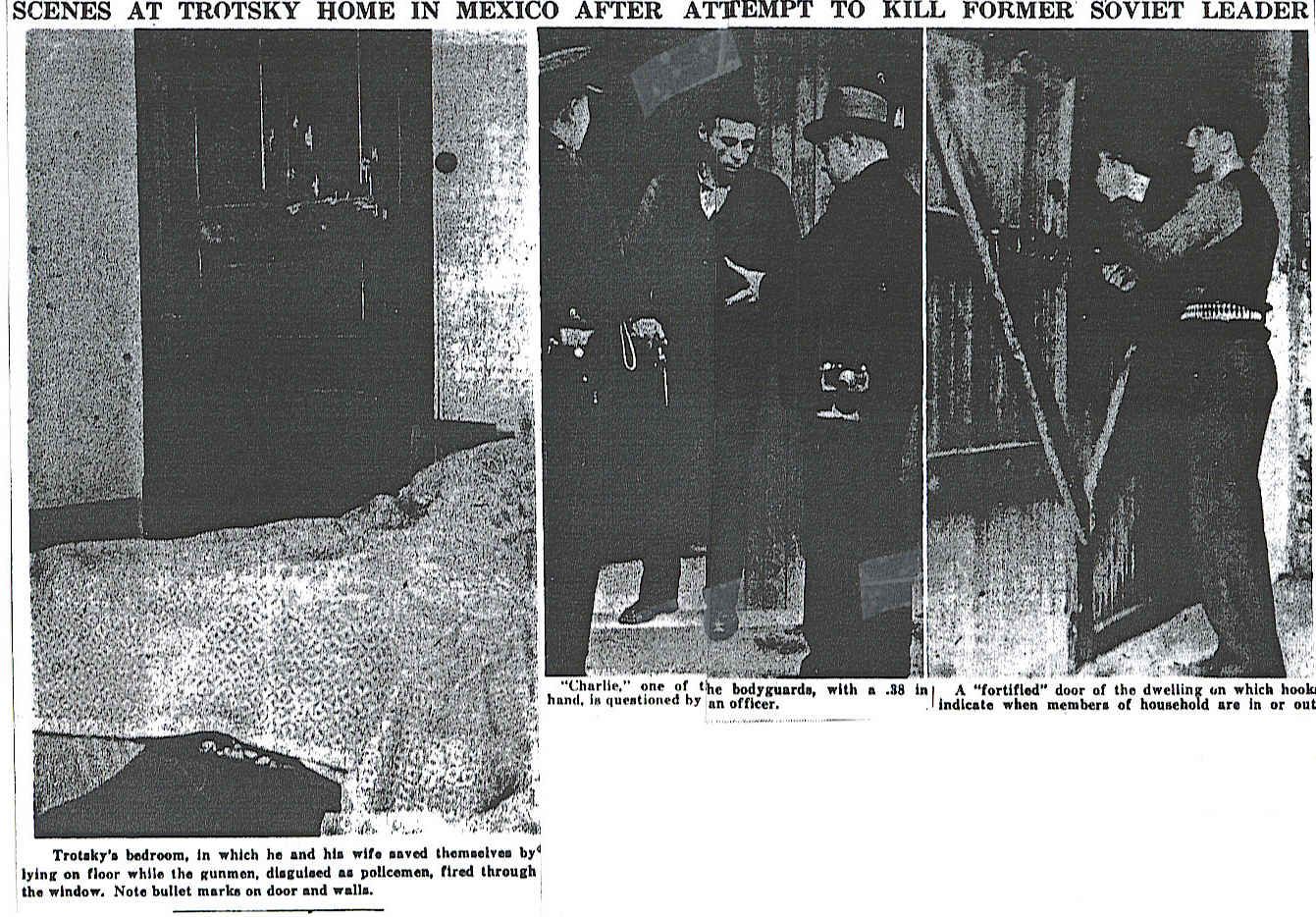

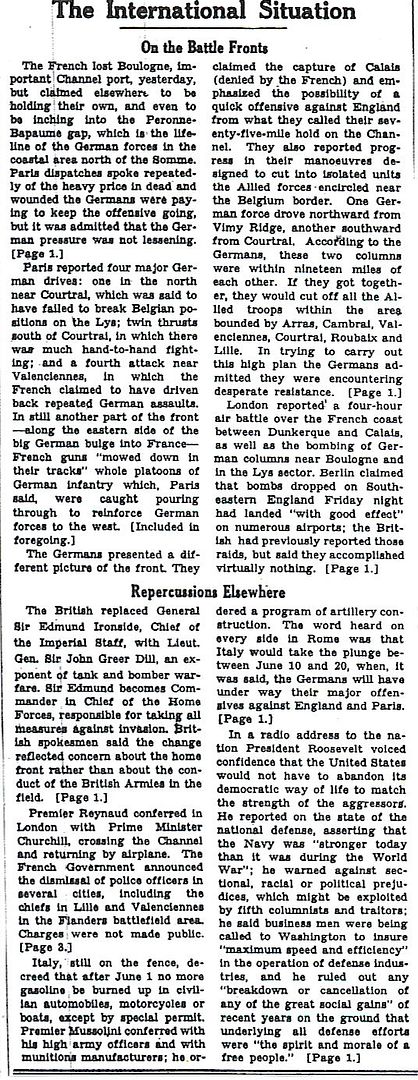
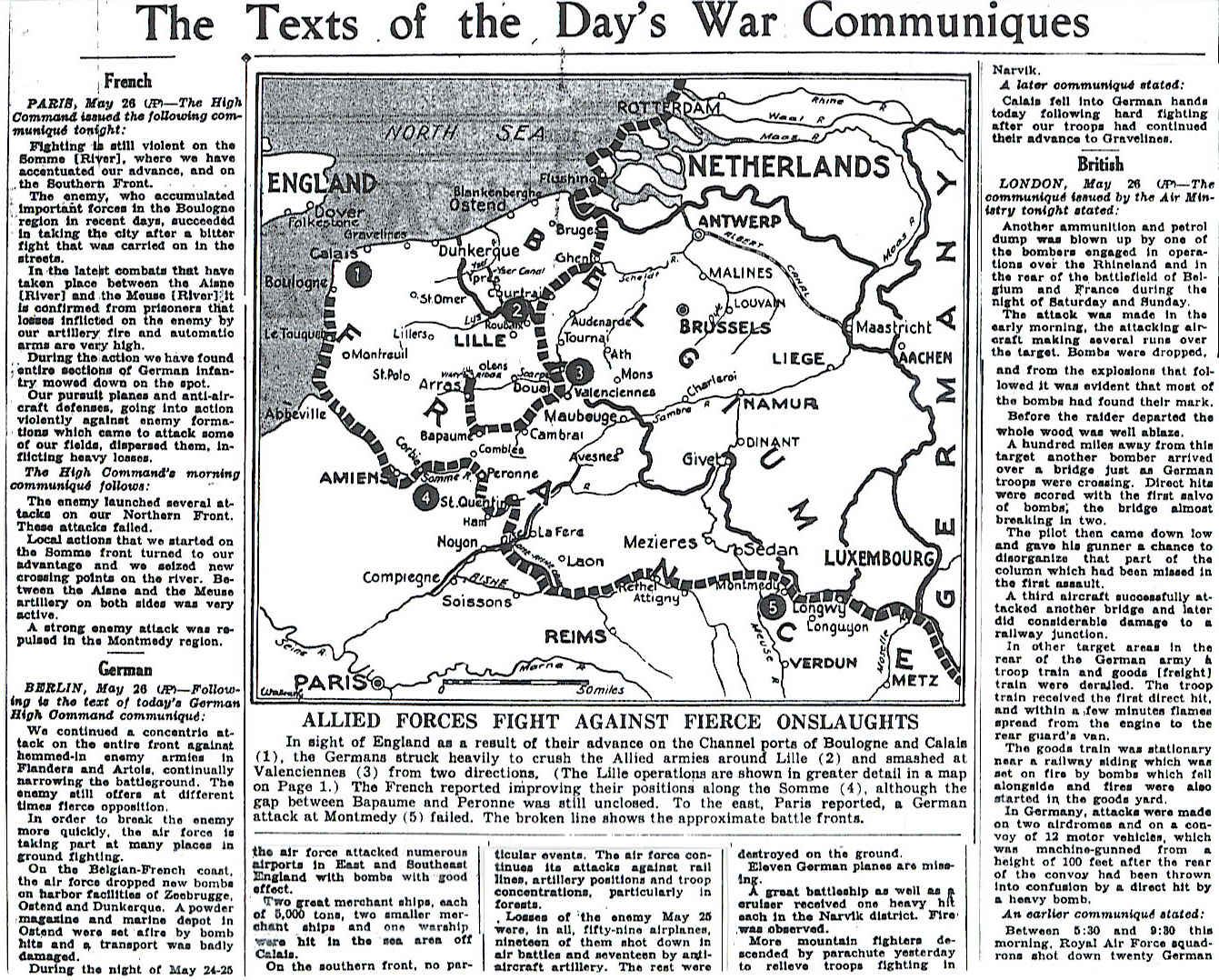
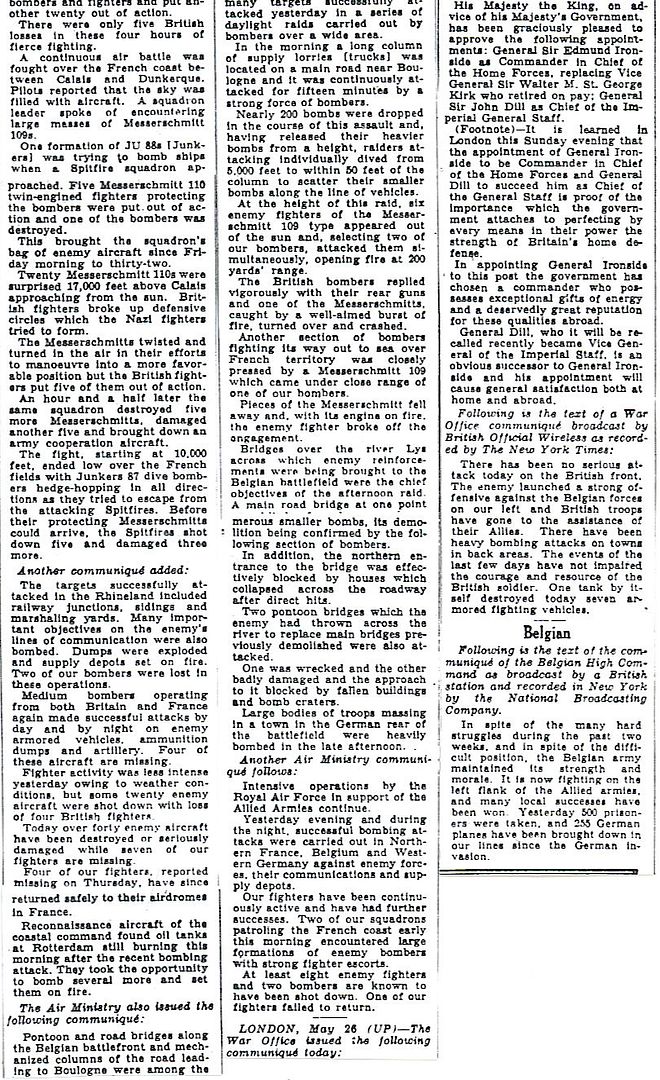
* Matthews has a good source there in Rome.
http://www.onwar.com/chrono/1940/may40/f27may40.htm
Panzers resume the offensive
Monday, May 27, 1940 www.onwar.com
On the Western Front... The German armor resumes its attacks, trying to cut off the British and French forces around Lille. A desperate defense enables most of them to get away to positions nearer the coast. There is also trouble nearer the coast where the Belgian resistance is becoming increasingly weak. In the Dunkirk evacuation only a little is achieved with less than 8000 men being landed in Britain.
In Norway... The Allied assault on Narvik gets under way. The attacking troops are led by the French General Bethouart. The town is taken after a brisk fight. When bad weather at the Bardufoss airfield grounds the Allied fighters, the attack is briefly held up because the ships providing bombardment support have to fight off the Stukas alone.
ping
These types of groups were natural constituencies of the Democrat party of the time.....and they still are....under new high-sounding labels.
Obama, his czars and administration are dealing with them behind the scenes all the time.....trying to hold on to their allegiance while still trying to appear moderate.
Funny (and scarey) how we can read the above 1940-ish casual political news, pick up the dangers of the era......and then see how history is repeating itself today.....with new players and organizations, but with the same ideologies.
But then, we read, therefore we are.
Leni
http://homepage.ntlworld.com/andrew.etherington/month/thismonth/27.htm
May 27th, 1940
UNITED KINGDOM: RAF Bomber Command: 4 Group (Whitley). Bombing - Dortmund, Duisburg, Dusseldorf and Cologne.
10 Sqn. Eleven aircraft. Ten bombed. One enemy aircraft claimed destroyed by tail gunner. One bombed Bassingbourn in error.
51 Sqn. Nine aircraft. Eight bombed, one attacked by enemy aircraft but evaded undamaged.
58 Sqn. Five aircraft, all bombed. One damaged by Flak. 77 Sqn. Nine aircraft. One returned early U/S, eight bombed. 102 Sqn. Two aircraft. One returned early U/S, one bombed.
[The 11th crew from 10 Sqn, failed to find their primary target and bombed what was thought to be an airfield in Holland. This was not the case. After carrying out their bomb-run they set course for home, but after flying for some time, and when the Dutch coast failed to show up, it was thought that something was amiss. This was confirmed when W/T bearings indicated that the aircraft was over England and flying on a westerly course. With the aid of further W/T assistance they were able to scramble back to base. A re-plot of the sortie was instigated and the unfortunate conclusion was reached that the airfield they had bombed must have been British! This was confirmed when communications with Air Ministry revealed that the RAF airfield at Bassingbourn, near Cambridge had been attacked at the same time the No. 10 Squadron crew presumed they were bombing an enemy airfield. Luckily there had been no casualties and only slight damage at Bassingbourn. Subsequently the story got around that one of the bombs had hit the W/T rest hut at the side of the airfield, passing through one wall, over the top of a sleeping airman and out the over side before exploding. The said airman then woke up!
Repercussions followed. The unfortunate skipper was demoted to second pilot and he and his crew subjected to much leg-pulling by the other crews. This included the dropping of a home-made ‘Iron Cross’ constructed from a tea-chest lid and some brown coloured cloth, by one of the other 4 Group squadrons. It was addressed to ‘Herr von (name withheld) from a grateful Führer.’
During subsequent investigation it was discovered that the magnetic compass had been rendered U/S when the aircraft had flown through an electrical storm after crossing the English Channel on its outbound flight.]
London: Dill takes over from Ironside as Chief of the Imperial General Staff.
The butter ration is cut back to four ounces per person per week.
FRANCE: German panzers attack near Lille trying to cut the route to Dunkirk. The French 1st Army conducts a valiant defence which enables many to continue to retreat..
Calais falls to the German army, which now surrounds the Allies at Dunkirk; only 8,000 men are evacuated today.
La Paradis: A farm outside this sleepy village was a scene of horror this afternoon when the SS wiped out a company of the Royal Norfolk Regiment left behind in the rush for Dunkirk.
Surrounded by Germans and cut off in a cowshed, Major Lisle Ryder opted to surrender with his 80 men. The SS unit (4th Company, I. Battalion, 2nd [TK] Inf. Rgt. of the SS-Totenkopf Division) led by ‘SS-Obstf. [section commander], Fritz Knoechlein (CO of 3.Kompanie), marched them into a barn. Machine-guns set up opposite the long, low wall opened fire on the column of soldiers; many were killed instantly. At a signal, the firing stopped and the Germans moved in on the pile of bodies, finishing the job with bayonets and pistols. Incredibly, Albert Pooley and William O’Callaghan survived, though seriously injured. More....
Abbeville: 7 Army (French) had been ordered to destroy the Somme bridgeheads. Today General Grandsard makes a determined attack on the bridgehead at Amiens with 7 and 4 Colonial Infantry Divisions. After sustaining heavy losses, an enemy counter-attack forced them back to the forming up point.
Opposite Abbeville, the enemy in the villages and woods south of the Somme are disposed in three lines, as far as Huppy, Bailleul and Bray.
Destroyers HMCS Restigouche, Skeena and St Laurent were engaged in Operation DYNAMO, the Dunkirk evacuation.
HMS Grafton ferried 860 men to Dover and returned the following day to pick up another 800. On passage back to England, Grafton stopped to assist with the rescue of survivors from another destroyer that had been sunk, but whilst doing so was herself torpedoed by a U-Boat. Despite being packed with troops, Only 4 people were killed and other vessels took on the remaining troops and ship’s company. Grafton was scuttled by gunfire. (Dave Shirlaw)
GERMANY: U-379 laid down. (Dave Shirlaw)
NORWAY: The first assault wave of Legionnaires and Norwegians embarked well inside Herjangs Fjord, which was concealed from Narvik by high ground behind the town of Oyjord. While every available warship pounded the Narvik-Ankenes area, the first wave swept into and across Rombakken Fjord. Legionnaires poured ashore and cleared a beachhead. The Norwegians passed through them and started up the beaches behind Narvik. A second wave began mustering at Oyjord to cross the fjord. Hurricanes and Gladiators swept overhead providing local air superiority. By 3:30 a.m., 1,250 men were ashore.
A German gunner got the range of the second assault wave and began slamming shells into the boats. The embarkation point had to be shifted back to Herjangs Fjord, and the undertaking threw the attack off schedule. Then a sea fog began rolling in over the airfield at Bardufoss. Planes on the ground could not take off; those in the air had to hurriedly return while they still had a place to land. At this point the Luftwaffe arrived in force to harry the British warships westward down Ofot Fjord. German infantry, which had been hidden in a crease in the bluff above the bridgehead, came down the slope throwing hand grenades. They pushed the Norwegians into the Legionnaires, and drove both groups back onto the beach.
Lieut. Commander S. H. Balfour, serving as Naval liaison officer to the French, lost his signal lamps and was unable to call for naval gunfire support. Resourcefully, he commandeered a beached landing craft and went after the dodging British ships, finally reaching the destroyer ‘Beagle’. Coming about amid Luftwaffe attacks, the Beagle ran in close to the beach, firing at short range. The Germans returned toward their ridge, rallying on the high ground behind Narvik until their comrades in the town could withdraw.
Driving at Ankenes, the Poles lost both of their tanks to mines, but broke through. Beyond Ankenes, a German counterattack caught them in the flank and threw them back. Rallying, they found the enemy withdrawing and managed to sink the last boatload of Germans escaping across Narvik harbour. The day ends with rear-guard fighting as the Germans extricate themselves, keeping their front intact.
The Poles and the Legionnaires link up at the head of Beis Fjord in the evening, then push the Germans back. At 5 p.m. the Allies enter Narvik, General Bethouart putting the Norwegians who had fought with him at the head of the column.
HMS Glorious remains off Narvik. HMS Ark Royal remains at Greenock loading stores and ammunition. (Mark Horan)
CANADA:
Corvette HMCS Galt laid down Collingwood, Ontario.
Patrol vessels HMCS Caribou (ex-yacht Elfreda), Reindeer (ex-yacht Mascotte) and Renard (ex-yacht Winchester) commissioned. (Dave Shirlaw)
U.S.A.: The Secretary of the Navy directed that six Fletcher-Class destroyers be equipped with catapult, plane, and plane handling equipment. The destroyers Hutchins (DD-476), Pringle (DD-477), Stanly (DD-478), Stevens (DD-479), Halford (DD-480), and Leutze (DD-481), were selected subsequently. Shortcomings in the plane hoisting gear led to removal of the aviation equipment from the first three ships prior to their joining the fleet in early 1943. In October 1943, after limited aircraft operations by USS Stevens and USS Halford, aviation equipment was ordered removed from them and plans for its installation on Leutze were cancelled. (Jack McKillop)
Roosevelt declares a full emergency following the sinking of the SS Robin Moor. (Gordon Rottman)
AA cruiser USS Juneau laid down. (Dave Shirlaw)
ATLANTIC OCEAN: At 1551, the unescorted Sheaf Mead was hit in the stern by one torpedo from U-37 and sank capsizing after a boiler explosion at 1554 about 180 miles from Cape Finisterre. The Germans tried questioning the survivors on a raft, but they did not answer the questions. The master, 30 crewmembers and one gunner were lost. Five crewmembers were picked up by Frangoula B. Goulandris and landed at Queenstown, Cork on 31 May.
SS Uruguay sunk by U-37. (Dave Shirlaw)
http://worldwar2daybyday.blogspot.com/
Day 270 May 27, 1940
Dunkirk. British & French fall back towards the coast, pressured by Panzer divisions (released from Hitler’s stop order) and bombed by Luftwaffe at Poperinge. 4 British divisions under General Alan Brook hold the Ypres-Comines canal (Battle of Wytschaete). The first 7,669 British troops are evacuated from Dunkirk harbour. Germans advance within 4 miles, bringing Dunkirk in artillery range.
British withdrawal uncovers the Belgian right flank and allows Reichenau’s 6th Army to storm through. At 5 PM, King Leopold III of the Belgians appeals to the Germans for peace terms, with Belgian refugees crowded in a thin strip of land behind the collapsing line. Hitler’s reply at 10 PM, “unconditional surrender”.
3rd SS Panzer Totenkopf Division troops under Hauptsturmführer Fritz Knöchlein machinegun 97 British prisoners of war in the French village of Le Paradis. The only 2 survivors will later testify against Knöchlein, leading to his execution for war crimes in 1949. http://en.wikipedia.org/wiki/Le_Paradis_massacre
150 miles West of Cape Finisterre, Spain, U-37 sinks British SS Sheaf Mead (32 lives lost, 5 rescued and taken to Ireland) and scuttles Argentinian SS Uruguay (13 crew rescued and taken to Spain; a lifeboat with 15 others is never found).
http://www.uboat.net/allies/merchants/ships/325.html
http://www.uboat.net/allies/merchants/ships/324.html


Dunkirk... wow. What a low point.
I was just in Brussels several weeks ago. I didn’t have a lot of time, but, I did visit a battlefield near Ghent.
The history of Belgium is one of CONSTANT takeover... from everyone... in every direction.
They make great chocolate, but... Belgians STINK at fighting.
That's almost uncanny.
There were heated discussions within the higher echelons of TOTENKOPF and the Waffen SS in general about Le Paradis, with many in favor of court martial for Knochlen, and punishment for the participants. In the end, Himmler ruled against it, and imposed an SS order of secrecy on the massacre.
Interestingly, the 1st SS, the LEIBSTANDARTE, had also massacred a group of British prisoners at Wormhout, after Sepp Dietrich and been lost to contact, and believed dead at the hands of the British by his men.
Disclaimer: Opinions posted on Free Republic are those of the individual posters and do not necessarily represent the opinion of Free Republic or its management. All materials posted herein are protected by copyright law and the exemption for fair use of copyrighted works.